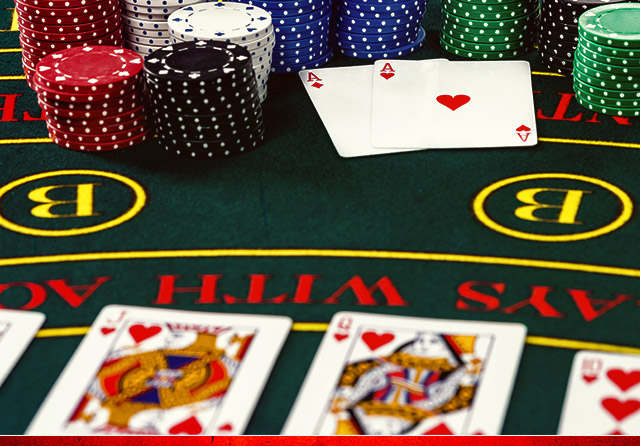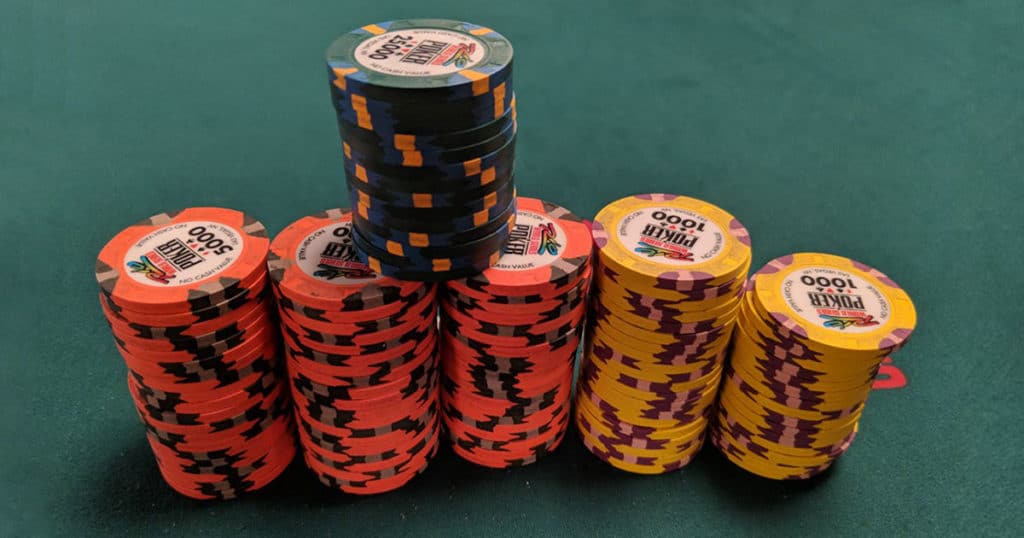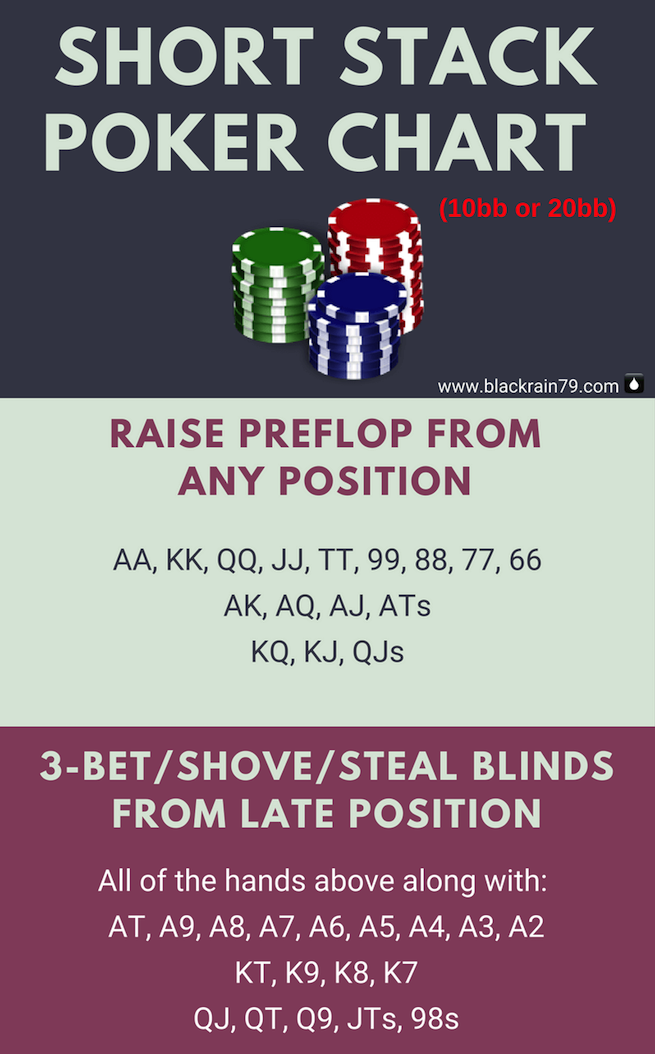Poker Late Tournament Strategy
Late position in the middle rounds of a poker tournament offers one of the best opportunities to increase your chip stack, whether you have a large or small stack. The advantage of acting after the majority of your opponents and the ability to put the maximum amount of pressure on the blinds, when used correctly, can make the difference between. MTT Strategy: The Late Phase The late phase of a tournament is characterised by a further increase in the blinds and a further decrease in the size of the stacks relative to the blinds. The average stack here is often only 20 BBs, which exerts great influence on the dynamics of the game. Have a good late stage tournament strategy in place; Play with a fearless attitude Be decisive Let us now deep dive into the kind of strategies / tips that you need to work upon for increasing your chances of winning during the fag end (later stage) of poker tournaments. Top Tips to Remember for Your Late Stage Tournament Strategy.
The late phase of a tournament is characterised by a further increase in the blinds and a further decrease in the size of the stacks relative to the blinds. The average stack here is often only 20 BBs, which exerts great influence on the dynamics of the game.
As already described in the article on the middle phase, stealing the blinds in order to keep our stack constant (or even increase it, if possible) remains an important aspect of the game. If we carry on playing only tight, careful poker we will in the end lose most of our chips paying the blinds and the ante.
Here’s a golden tip for you: When you reach the late stages of the poker tournament, you should up your game and play far more aggressively than you do in the early stages of the contest. Stay tuned – we’ll tell you why this is the best strategy to adopt.
In this article we look at how to defend ourselves against attempted blind steals, and under what circumstances we can or can’t call all-in.
The re-steal
“Re-steal” is the term for re-raising a (suspected) blind steal from a late position. In many cases our stack is so small that we can go all-in right away. The main advantage of a re-steal is that we can win a much bigger pot than with the classic blind steal, because it contains not only the blinds and the ante but also the would-be blind stealer’s raise. A successful re-steal thus increases our stack substantially.
The primary goal of a re-steal is to win the pot before the flop.
- Example
Nine players, blinds: 500/1000, ante: 100
Button: 20,000 chips
SB: 30,000 chips
Hero in the BB: 15,000 chips, holding 3♠3♦

All players fold up to the button, who raises to 2,500. After the small blind has folded we (the big blind) raise to 15,000 all-in. The button folds and we win 4,900 chips.
In this example we increase our stack by almost 30%.
What sort of hand do we need for a re-steal?
We want to win the pot before the flop, so at first it isn’t necessary to have a very good or even a premium hand. However, we don’t want to be in a completely hopeless predicament if our re-steal attempt is called. Suitable hands are thus all pairs, but also suited connectors and aces with strong kickers.
Kings and aces with weak kickers are less suitable for re-stealing because if we’re called, we’ll be dominated too easily. Although we actually want to steal, the starting hand we use to do this does play a role.
What kinds of opponent are particularly suitable for re-steals?
The more hands an opponent has raised from a late position when all other players before him have folded, the more profitable re-stealing will be for us in the long term. This is because we can work on the assumption that our opponent’s hand range is quite loose, so that he will seldom, if ever, be able to call a re-steal. He would need a really strong hand to do that. Because he raises a lot of hands, he has to fold most of them, and we win the pot pre-flop.
What else do we have to note?
The prerequisite for a re-steal is that we either have fold equity or a very strong hand. Fold equity means that we go all-in with sufficient chips, that our opponent folds often enough and is able to call the all-in only when he has a really strong hand. This doesn’t happen very often, so the probability that our opponent will fold his hand is high.
But if we go all-in with so few chips that our opponent gets pot odds of 2:1 then he’ll usually call us and our fold equity will thus tends towards zero.
If we have no fold equity we must be holding a very strong hand in order to go all-in.
Rule of thumb: the effective stack size must be at least four times the size of the original raise for us to have fold equity.
Calling all-in bets pre-flop

In this phase of a tournament there are inevitably a lot of all-in situations. But when should we call an all-in?
- With premium hands such as AA, KK, QQ and AK we should always call an all-in pre-flop.
- If a player ahead of us has gone all-in, we should as a rule isolate him.
“Isolate” means that we don’t simply call but that we re-raise our opponent’s raise higher than his all-in. The goal of isolation is to force the other players out of the hand in order to maximise our own chances of winning. This is because even premium hands such as aces win too seldom against several opponents for us to want to risk it.
If our own stack is smaller than four or five times the size of the original raise then we’ll also have to go all-in if we want to isolate our opponent.
We raise and an opponent re-raises
However, if we raise and a player goes all-in, we’ll often be faced with a very difficult decision. Here is a list of the points we have to bear in mind.
- How many chips must we still put in? What are our pot odds?
This is often the decisive point. With pot odds of 2:1 or better a call will normally be automatic because one win in three is enough to make calling profitable in the long term. Exceptions that could perhaps stop us calling an all-in would be strategic decisions in cases where our position at the table would deteriorate too much if we lost.
- How strong is our hand?
If we’re holding either a very weak or a very strong hand then the decision is usually simple: CALL the very good hand and FOLD the very weak one. If our hand is average, though, we have to ask ourselves further questions.
- What hands could our opponent be holding?
It is, of course, very difficult to determine the precise range of hands that our opponent could be holding in this situation and we can only make some rough assumptions. But in order to do this we have to take a variety of other factors into consideration. How aggressive is our opponent? What position are we in, what position is our opponent in? When we have determined a rough range, we must then consider: - What are the chances that our hand will win against a hand in the range of our opponent?
This is a purely mathematical question and can be answered with the help of the odds calculator.
When we know the exact chances of winning and the pot odds we can calculate precisely whether calling or folding is the correct decision (please refer to the table below). Making calculations in this form at the poker table is, of course, not possible. So, it makes sense to give some thought to various scenarios when we’re not at the table, because that will help us to develop a feel for our chances when it comes to concrete situations.
- What hands could our opponent be holding?
- How many players are there after us?
The more players there are who can still act, the greater the possibility that one of them will be holding a hand better than ours, even a monster. For this reason it’s much easier to go all-in as the last player in the big blind than as a player in middle position with five players still to come.
- How many chips will we have left if we lose the all-in?
This is an important aspect insofar as we will possibly decide to fold a hand with which we would normally have gone all-in if losing it means being left with very few chips.
Here is a table showing the minimum probability of winning against the hand range of an opponent I need in order to make calling profitable at various pot odds.
Poker Late Tournament Strategy Tactics

| Pot Odds | Probability of Winning |
|---|---|
| 1.5:1 | 40% |
| 1.6:1 | 38.46% |
| 1.7:1 | 37.04% |
| 1.8:1 | 35.71% |
| 1.9:1 | 34.48% |
| 2:1 | 33.33% |
| 2.25:1 | 30.77% |
| 2.5:1 | 28.57% |
| 2.75:1 | 26.67% |
| 3:1 | 25% |
| 3.5:1 | 22.22% |
| 4:1 | 20% |
| 5:1 | 16.67% |
In the next article we will deal with the game on the bubble. One mistake here can mean the difference between winning prize money and being eliminated empty handed.
Poker Tournament Late Registration Strategy
Join us on our Discord channel.